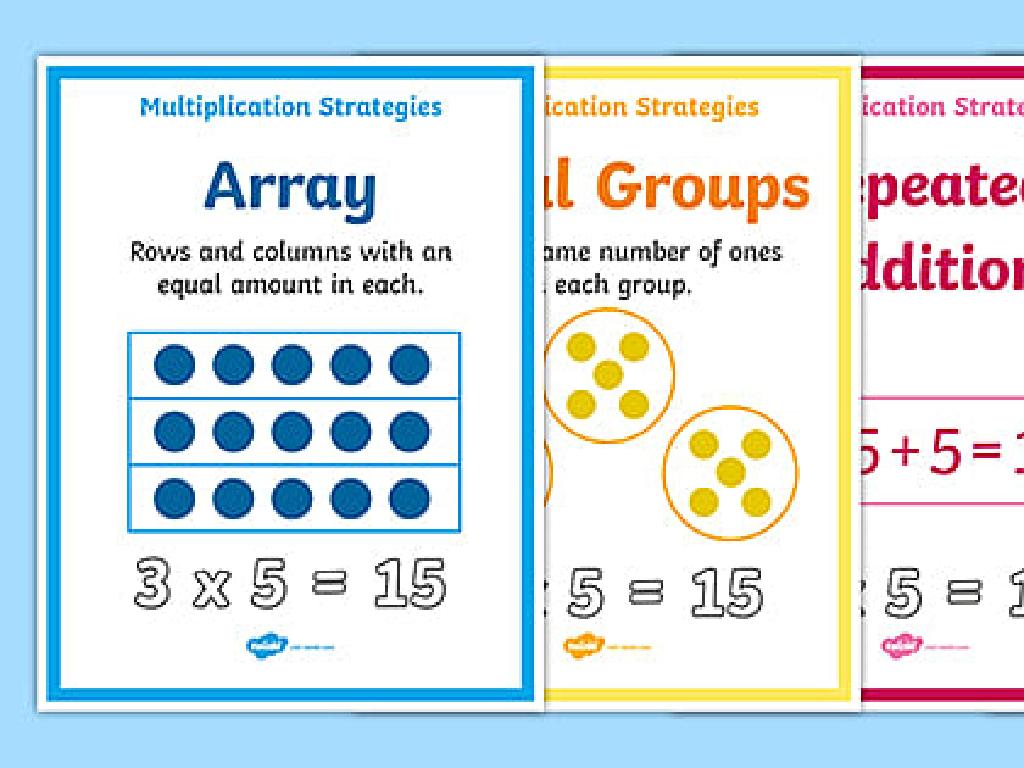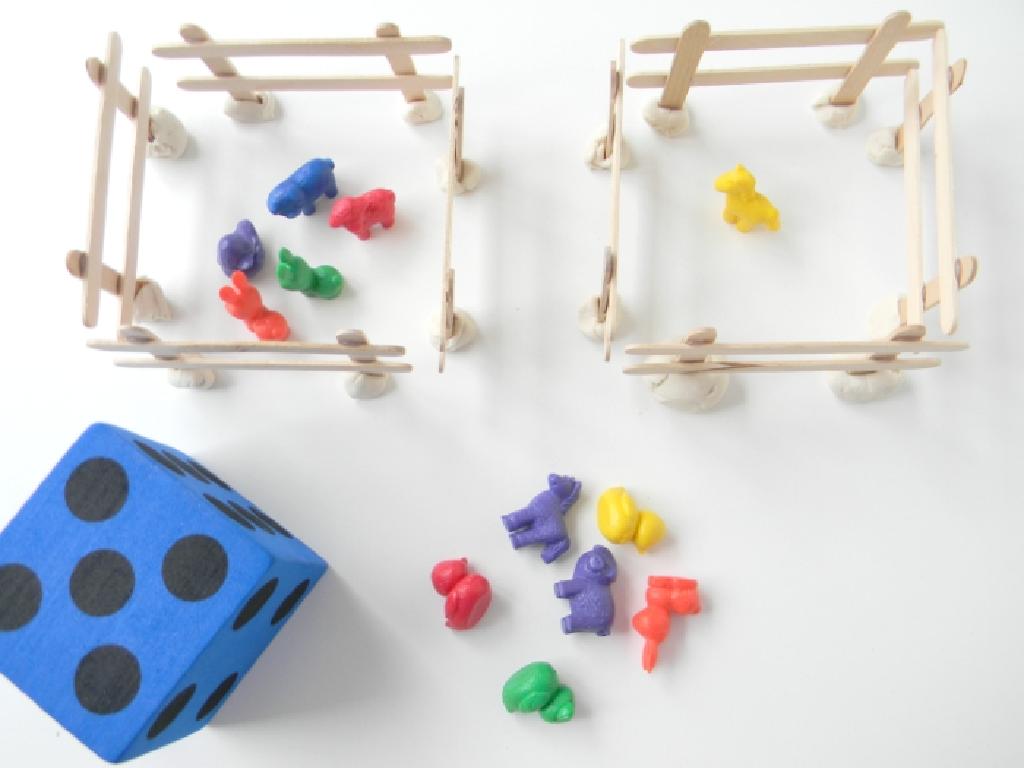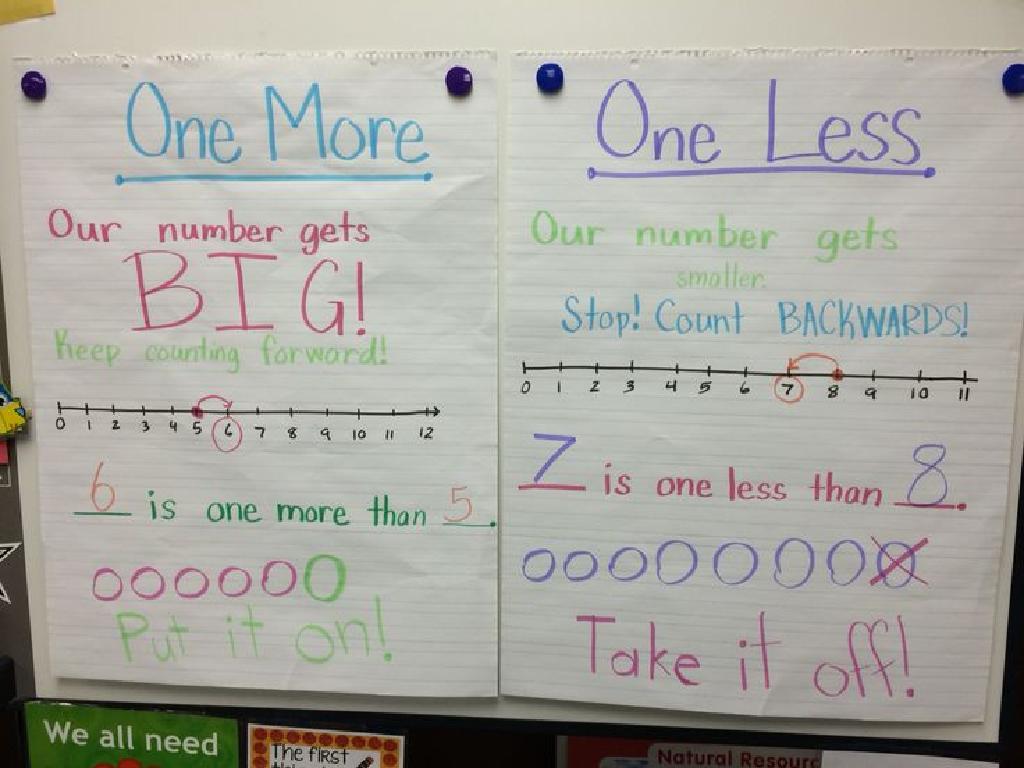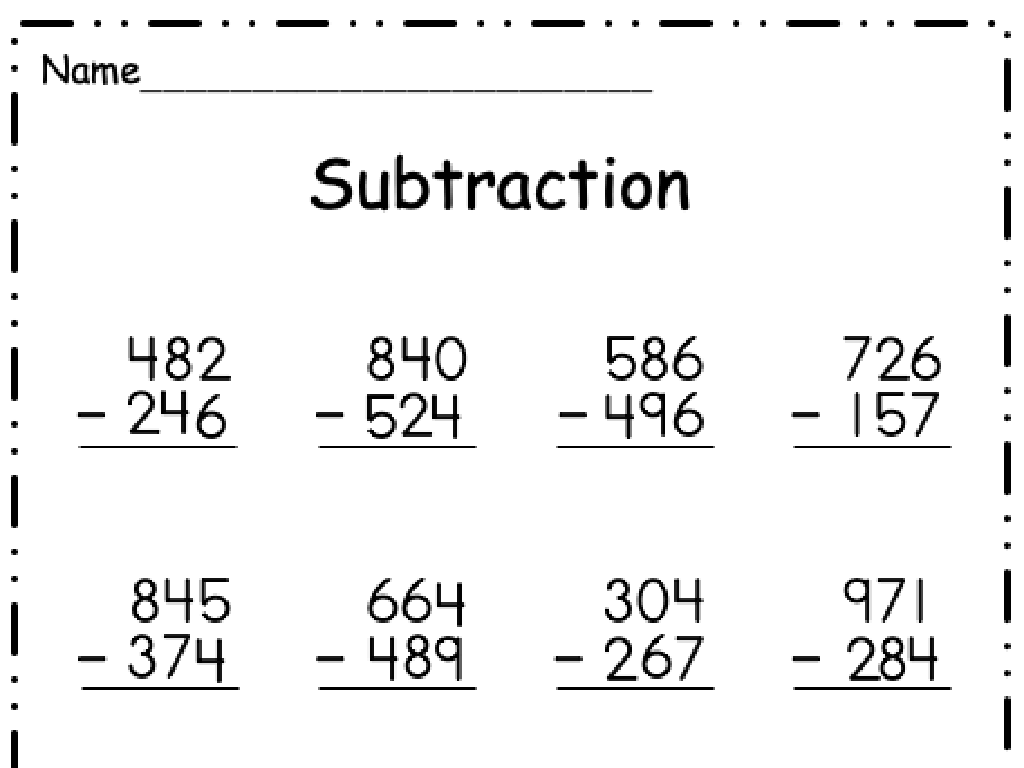Determine The Themes Of Myths, Fables, And Folktales
Subject: Language arts
Grade: Third grade
Topic: Theme
Please LOG IN to download the presentation. Access is available to registered users only.
View More Content
Exploring Themes in Stories
– What is a theme?
– The main message or lesson of a story
– Themes in traditional tales
– Good vs. evil, bravery, friendship, and loyalty in classic tales
– Understanding theme’s value
– Helps us learn lessons and understand the world
– Examples of common themes
– ‘Slow and steady wins the race’ from The Tortoise and the Hare
|
This slide introduces the concept of ‘theme’ to third-grade students, emphasizing its presence in myths, fables, and folktales. Begin by defining theme as the underlying message or lesson that the author wants to convey through the story. Illustrate this with familiar stories and their themes, such as the importance of honesty in ‘The Boy Who Cried Wolf’ or the value of hard work in ‘The Ant and the Grasshopper.’ Discuss why recognizing the theme is crucial: it helps us learn from the characters’ experiences and apply these lessons to our own lives. Encourage students to think of stories they know and identify possible themes. This will prepare them for identifying themes in new stories they read.
Exploring Myths
– What is a Myth?
– A traditional story explaining natural or social phenomena, often involving gods or heroes.
– Key Characteristics of Myths
– Myths include powerful characters, explain a practice, and often involve supernatural events.
– Examples of Famous Myths
– Hercules’ Labors, Persephone and the changing seasons, or the creation of the world.
– Understanding Myth Themes
|
This slide introduces students to the concept of myths, which are a type of traditional story that have been passed down over generations and often involve gods, goddesses, and heroes. They serve to explain natural or social phenomena and include powerful characters and events beyond human understanding. Provide examples of popular myths such as Hercules’ Labors or the story of Persephone to illustrate the characteristics of myths. Discuss with students how these stories help people understand the world around them and often contain a moral or lesson, which is the theme of the myth. Encourage students to think about what lessons or themes they can learn from these myths.
Exploring Fables
– What is a fable?
– A short story with a moral lesson, often with animal characters
– Key features of fables
– Animals that talk, simple plot, and a clear moral or lesson
– Examples of well-known fables
– ‘The Tortoise and the Hare’, ‘The Boy Who Cried Wolf’, and ‘The Ant and the Grasshopper’
|
This slide introduces the concept of fables to third-grade students. Begin by defining a fable as a short story that teaches us a lesson, usually through animal characters that speak and act like humans. Highlight the characteristics of fables, such as talking animals, simple stories, and a moral at the end. Provide examples of famous fables and their lessons to help students connect with the material. Encourage students to think of any fables they may already know and discuss the lessons those stories teach. This will help them understand how fables use simple narratives and characters to convey deeper meanings about life and behavior.
Exploring Folktales
– What is a folktale?
– A story passed down through generations, often with a moral lesson.
– Key characteristics
– Folktales have patterns, like repeated events or numbers (e.g., ‘The Three Little Pigs’).
– Examples of folktales
– ‘Cinderella’, ‘The Tortoise and the Hare’, and ‘Jack and the Beanstalk’ are classic folktales.
– Understanding folktale themes
– Themes are the big ideas or messages like kindness, bravery, or honesty.
|
This slide introduces students to the concept of folktales, which are stories that have been told within cultures for many years, often passed down orally from generation to generation. These stories typically include common characteristics such as recurring patterns or numbers, talking animals, and a moral or lesson at the end. Provide examples of well-known folktales to help students connect with the material. Discuss the themes found in these stories and how they relate to the lessons they teach us. Encourage students to think of any folktales they know and the lessons those stories convey.
Exploring Themes in Stories
– Finding a story’s theme
– Think about the lesson or message in the story
– Common themes in traditional tales
– Good vs. evil, bravery, friendship, and honesty are often found in these stories
– Let’s practice finding themes
– We’ll read a tale together and discuss the theme
– Share your thoughts
|
This slide introduces the concept of themes within stories, specifically focusing on myths, fables, and folktales. Begin by explaining that a theme is the main message or lesson that the story is trying to convey. Use familiar stories to illustrate common themes, such as the importance of honesty in ‘The Boy Who Cried Wolf’ or bravery in ‘The Three Little Pigs.’ Engage the class in a group activity where you read a story together and identify the theme as a class. This will help students understand how to find the theme and see the variety of themes that can exist in stories. Encourage students to participate and share their interpretations of the theme.
Exploring Themes in Myths
– Discuss themes found in myths
– Themes are big ideas like bravery or friendship
– Read a myth as a group
– We’ll read a myth aloud in class
– Work together to find the theme
– As a team, we’ll figure out the myth’s message
– Understand what a theme tells us
– Themes teach us lessons about life
|
This slide is aimed at helping third-grade students understand the concept of themes within myths. Begin by explaining that a theme is a big idea or message that comes from a story. It’s what the story is really about, beyond just the characters and the plot. After discussing, read a selected myth aloud to the class, ensuring to engage them with expressive narration. Then, guide the class to identify the theme by asking questions about the characters’ actions and the outcomes of the story. Encourage students to think about what lesson the myth is trying to teach us about life. This activity will help students to not only identify themes but also to see the value and lessons in these ancient stories.
Exploring Themes in Fables
– Discuss fable themes
– Themes are important lessons or morals
– Read a fable as a group
– We’ll read a fable aloud in class
– Identify the theme together
– As a class, we’ll figure out the fable’s lesson
|
This slide is aimed at helping third-grade students understand the concept of themes in fables. Begin by explaining that a theme is a big idea or lesson that the story teaches us. Choose a fable that is age-appropriate and has a clear moral lesson. Read the fable together as a class, either by taking turns or having the teacher read aloud. After reading, engage the class in a discussion to identify the theme. Ask questions to guide them towards the moral of the story and how it can apply to their own lives. Encourage students to think of other stories they know and the lessons those stories teach. This interactive approach will help solidify their understanding of themes in literature.
Exploring Themes in Folktales
– Discuss themes in folktales
– Themes are big ideas or messages in a story
– Read a folktale as a group
– We’ll read a folktale aloud in class
– Work together to find the theme
– As detectives, we’ll look for clues to the theme
|
This slide is aimed at introducing third-grade students to the concept of themes within folktales. Begin by explaining that a theme is a big idea or lesson that the story teaches us. Choose a folktale that is age-appropriate and engaging for the class to read together. After reading, facilitate a class discussion to identify the theme, guiding students to look for recurring patterns, character actions, and outcomes that point to the central message of the folktale. Encourage participation by asking open-ended questions and praising their efforts. This activity will help students understand how to extract deeper meanings from stories and improve their critical thinking skills.
Class Activity: Create Your Own Fable
– Choose animals for characters
– Decide your fable’s moral
– A moral is a lesson your fable teaches
– Write your own fable
– Share with the class
– Practice reading it aloud
|
This activity is designed to help students understand the structure and purpose of fables. Start by discussing what a fable is and its elements, such as anthropomorphic animals and a moral. Allow students to select animals for their characters, thinking about the traits those animals might represent. Guide them to decide on a moral or lesson their fable will convey. Students will then write their own short fable based on the characters and moral they’ve chosen. Encourage creativity and simplicity, as fables are typically brief and straightforward. Once they have written their fables, students will share them with the class, which will help with public speaking skills and give them a chance to discuss the morals of their stories. Provide feedback and praise for their efforts. Possible morals could include ‘Slow and steady wins the race’ or ‘Honesty is the best policy’.
Exploring Themes: Wrapping Up
– Recap themes in stories
– Remember, themes are big ideas like friendship or courage.
– Why themes matter
– Themes help us learn lessons and connect with others.
– Keep exploring stories
– Find new stories and discover their themes.
– Themes make stories special
– Themes are the heart of the story, making them meaningful.
|
As we conclude, remind the students of the importance of themes in myths, fables, and folktales. Themes are the underlying messages or big ideas that are central to the story. They help us learn lessons that are important in life, such as the value of honesty or the importance of being kind. Encourage the students to continue reading and exploring different stories to discover and understand new themes. Emphasize that every story has a theme that makes it special and can teach us something valuable. This will not only enhance their comprehension skills but also their appreciation for literature.






